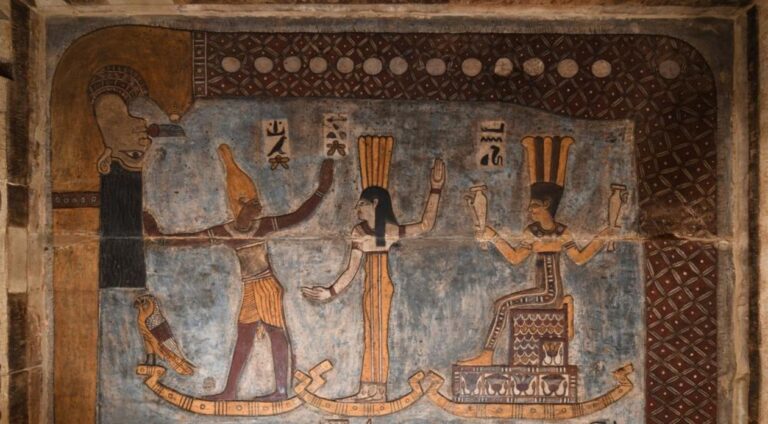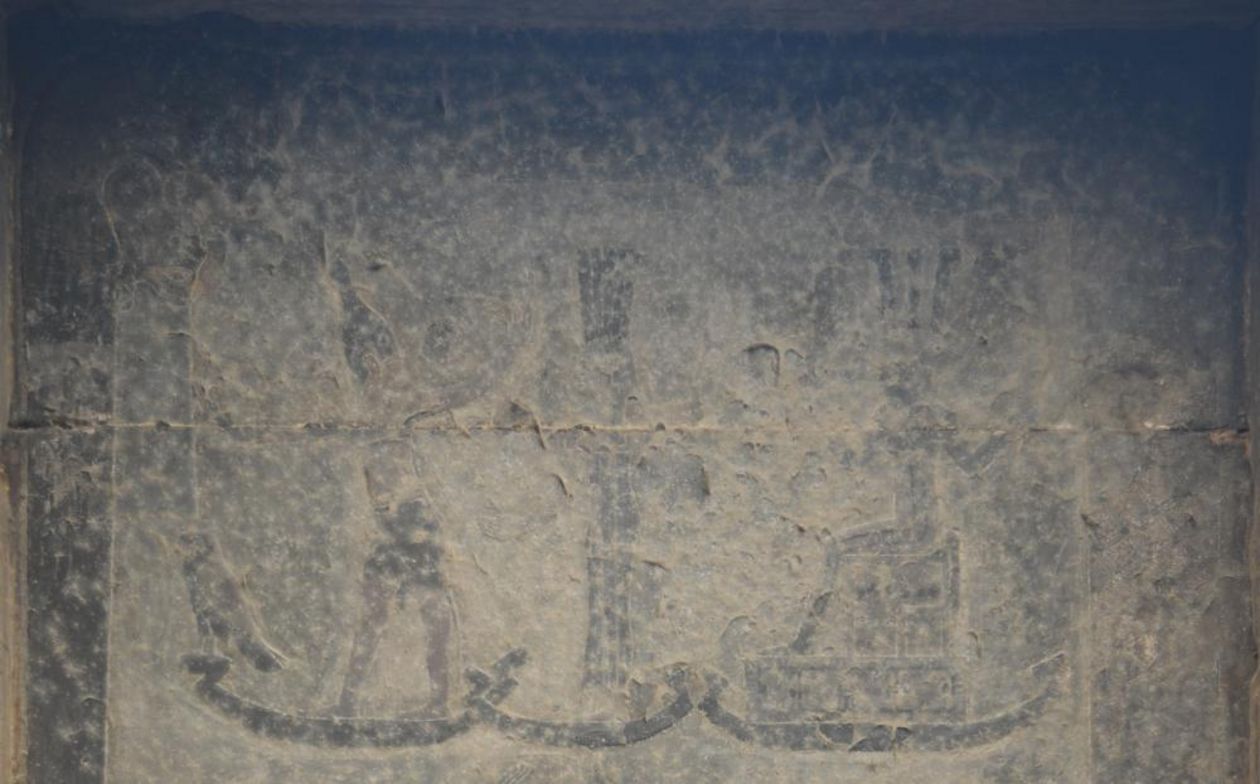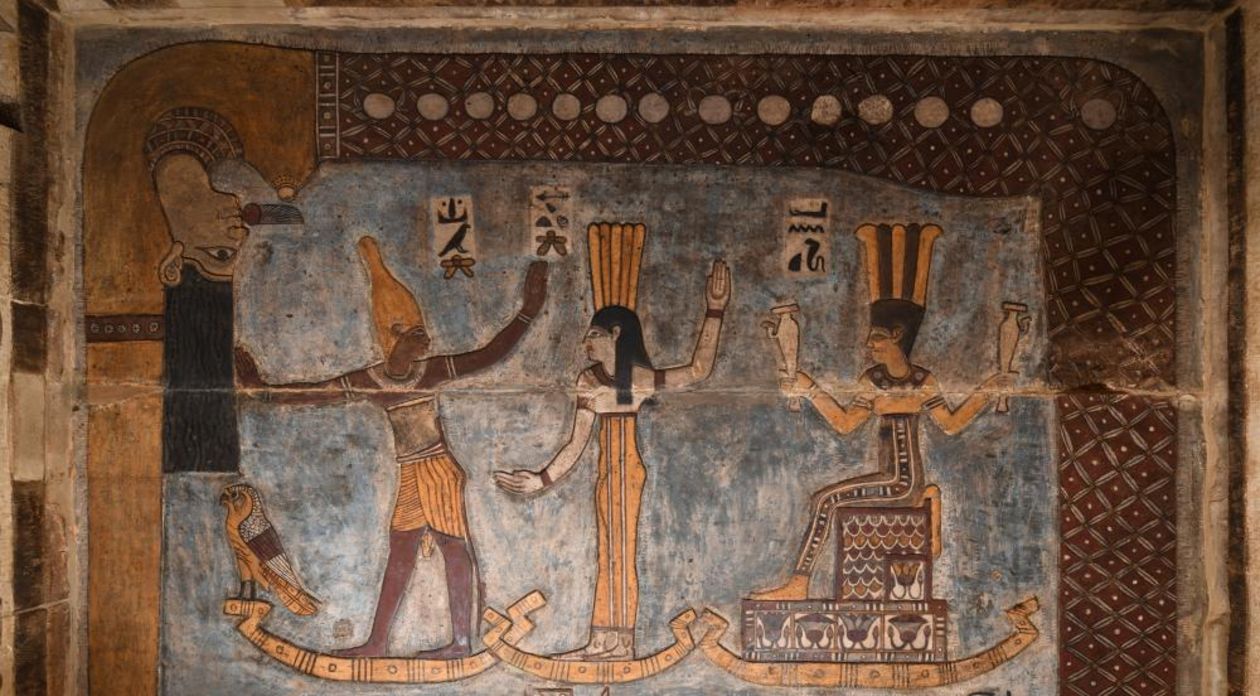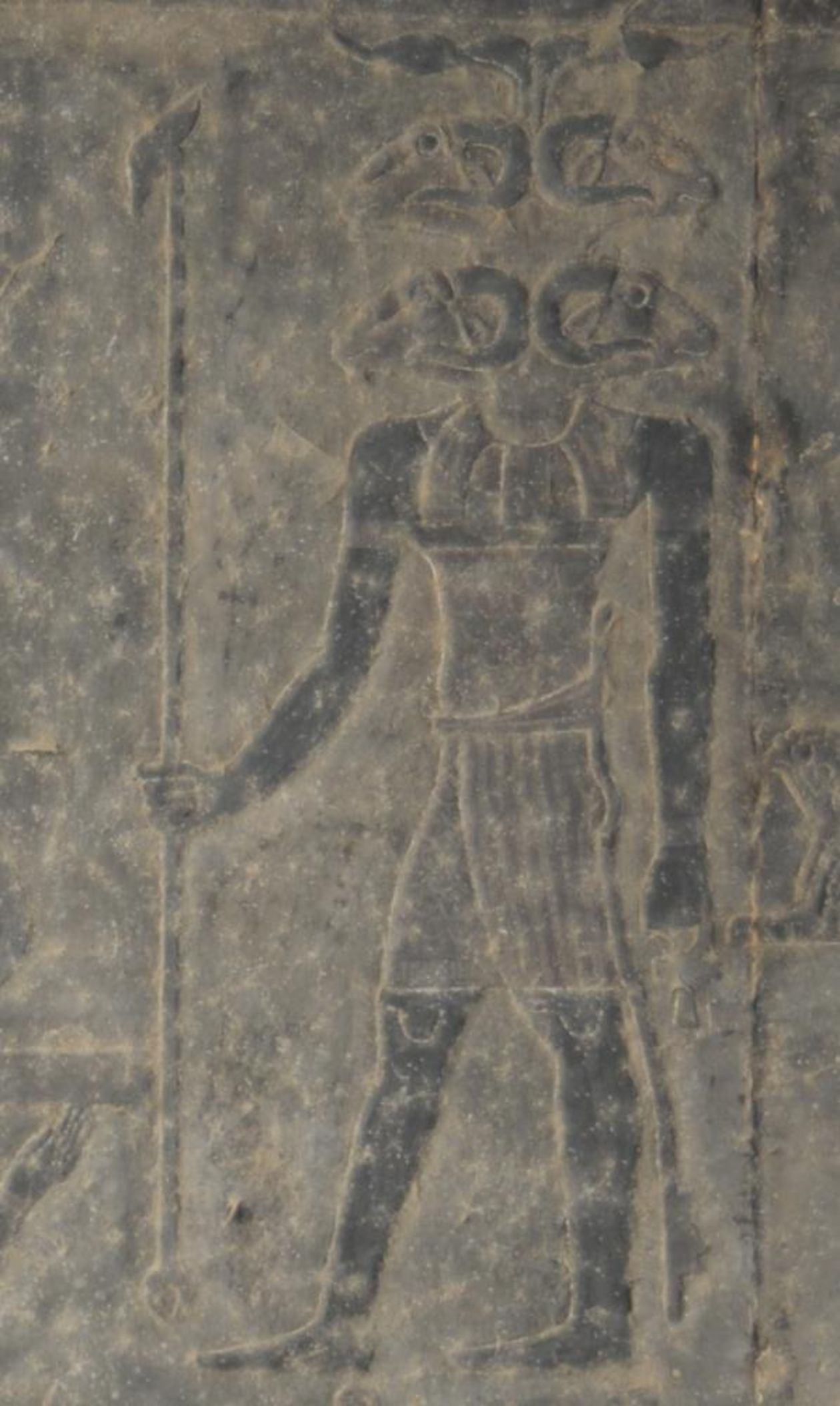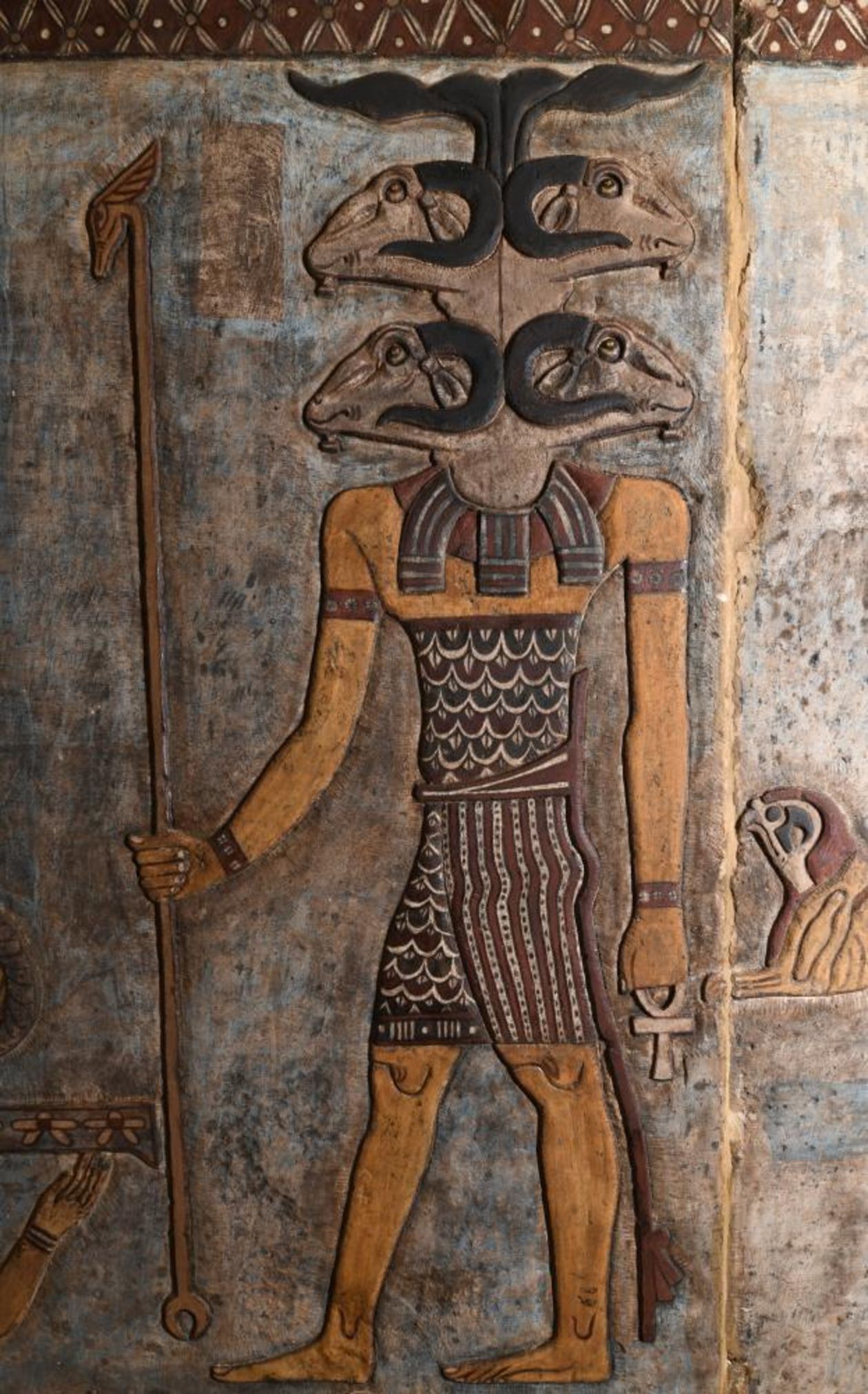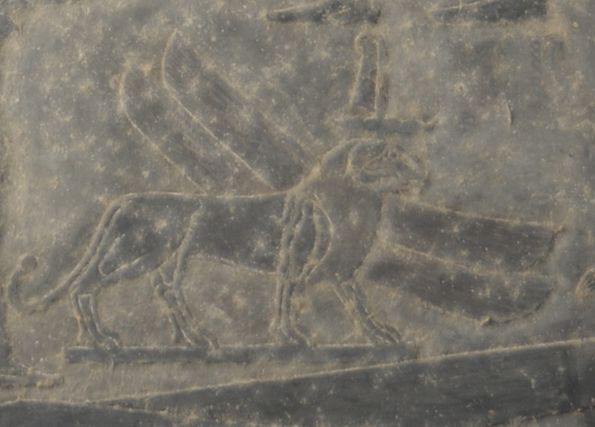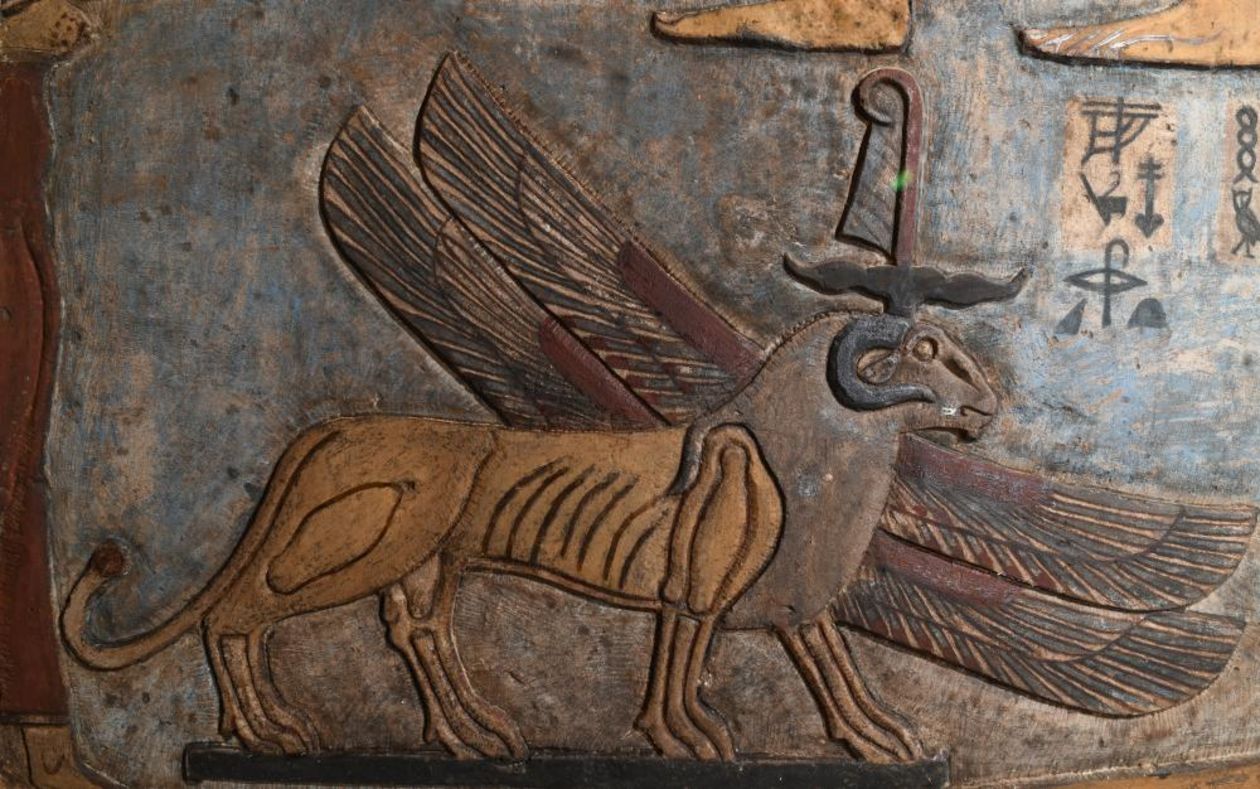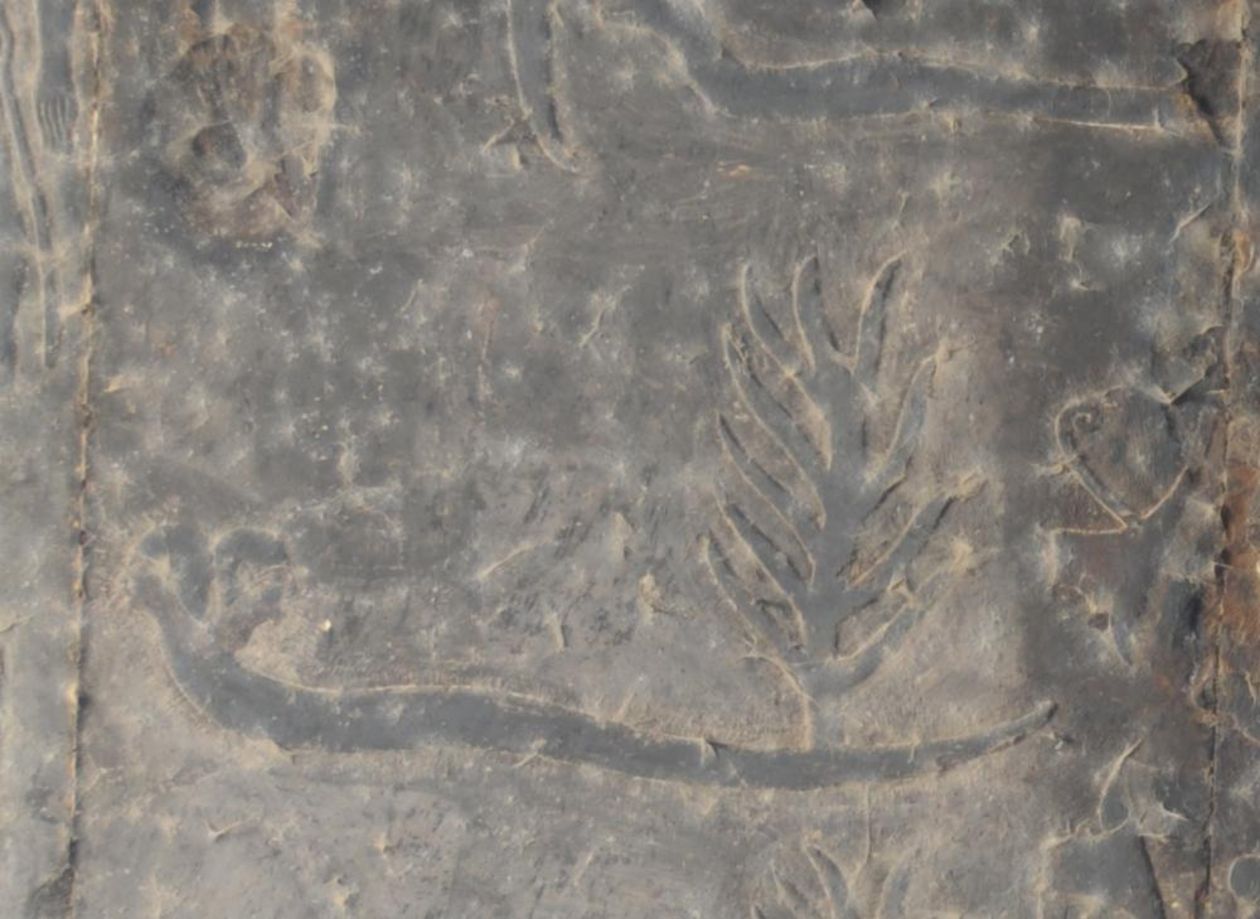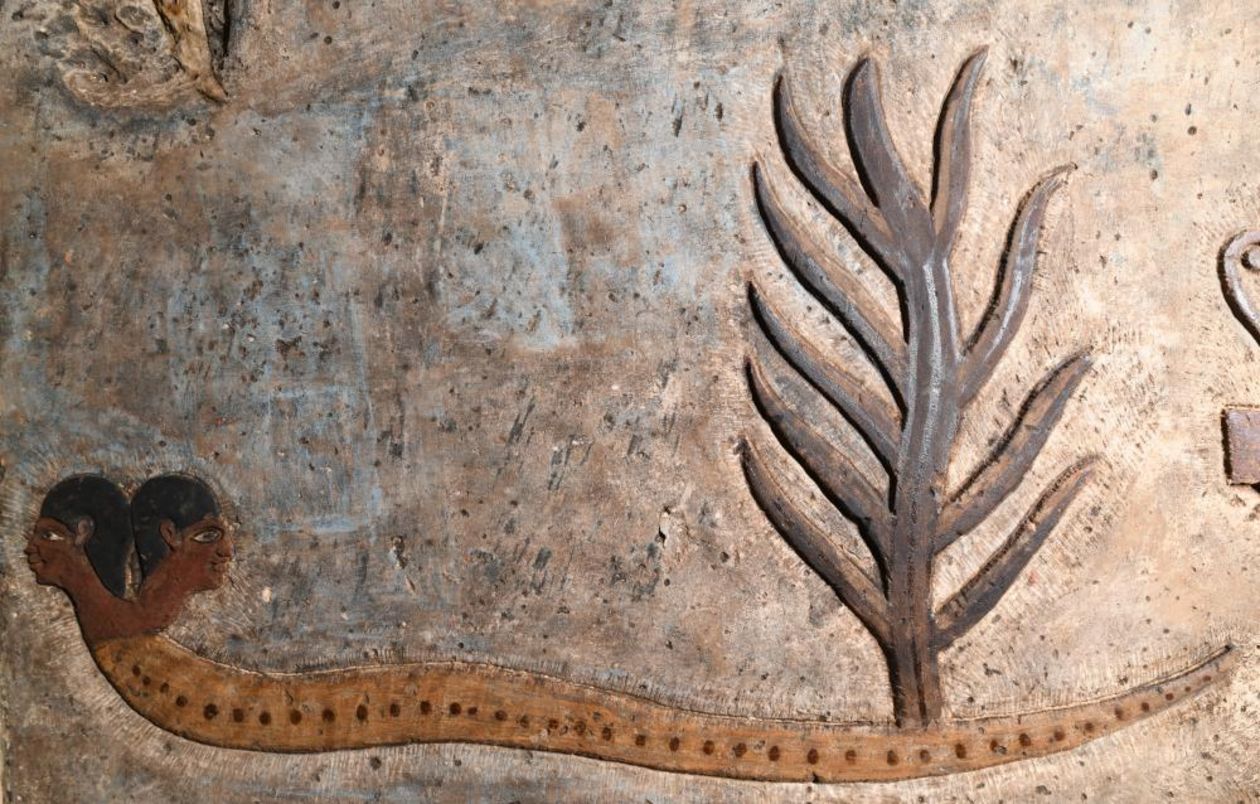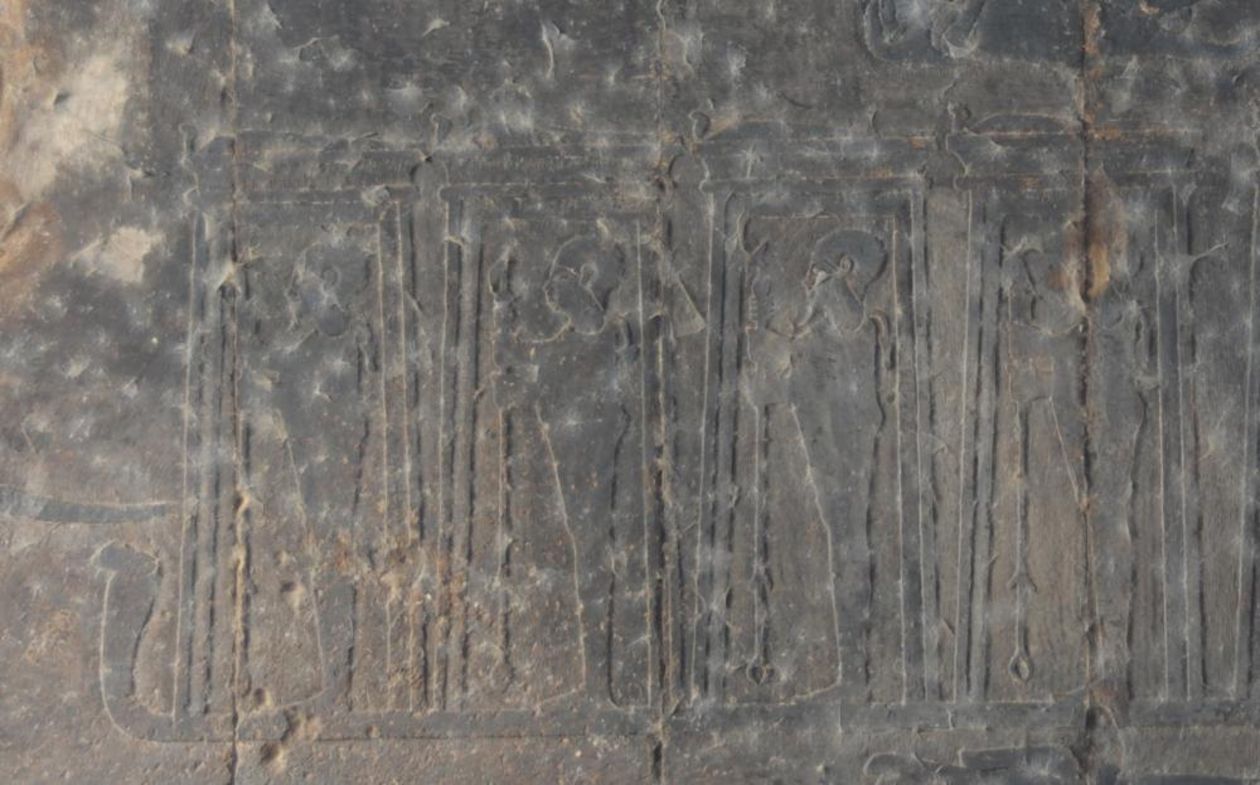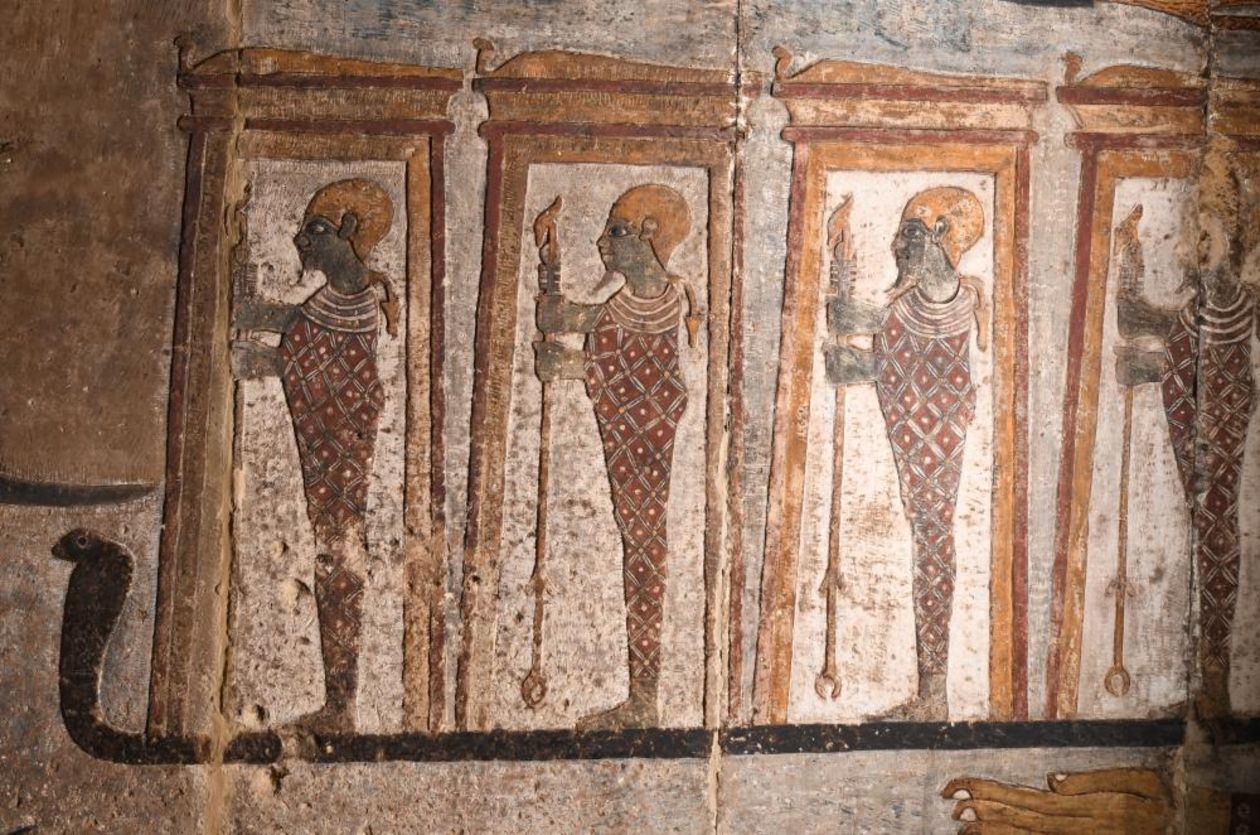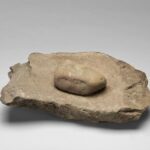Ceiling restoration complete at the Temple of Esna
Experts from Egypt and Germany have finished restoring the ceiling of the ancient Temple of Esna. Working over a period of five years, 30 specialists under the direction of Ahmed Emam cleaned the dirt and soot off hundreds of figures and astronomical representations, revealing them once more in their original colors.
“The completion of the ceiling restoration marks the project’s first and perhaps most important milestone,”
says Professor Christian Leitz of the Institute for Ancient Near Eastern Studies at the University of Tübingen.
“In the next few years, we want to focus on removing soot from the interior walls of the Pronaos and the remaining columns,” he says.
The restoration of the Temple of Esna is a joint project between the Egyptian Ministry of Tourism and Antiquities and the University of Tübingen. On the Egyptian side, project management was in the hands of Dr. Hisham El-Leithy. The colorful ceiling reliefs show gods, mythological figures and representations of the sun, moon, signs of the zodiac, and various astronomical constellations. In addition to the colors, the restoration brought to light almost 200 ink inscriptions that were previously completely unknown. These inscriptions helped researchers identify many of the images depicted.
“The thematic breadth of the depictions underscores the great importance that astronomy had in ancient Egypt,”
says Tübingen Egyptologist Dr. Daniel von Recklinghausen. The ceiling is divided into seven sections, each featuring a different theme. Themes include, for example, the daily course of the sun, the phases of the moon, the different hours of the night, and even New Year’s Day.
“Images of the deities Orion, Sothis and Anukis play an important role in the most recently uncovered section,” von Recklinghausen says.
Orion represents the constellation of the same name. Sothis, which is the ancient Egyptian name for the constellation Sirius, is depicted next to him.
“Sirius is invisible in the night sky for 70 days a year until it rises again in the east,” Leitz explains, “That point was New Year’s Day in ancient Egypt and also heralded the annual flooding of the Nile.”
In the Egyptians’ belief system, the third figure – the goddess Anukis – was responsible for the Nile floodwaters receding about 100 days later.
Ceiling restoration complete at the Temple of Esna. Gallery; photo credits: Ahmed Amin/Ministry of Tourism and Antiquities (MoTA)
With the restoration now complete, Egypt now has two outstandingly well-preserved astronomical temple ceilings. One is in the temple of Dendara about 60 kilometers north of Luxor. The dominant colors here are white and light blue. In the temple of Esna, some of the same themes are represented, but the color scheme is completely different, with yellow and red dominating. The work at Esna was supported by the Ancient Egypt Foundation, the American Research Center in Egypt, and the Gerda Henkel Foundation.
The temple is in Esna, 60 kilometers south of Luxor in Egypt. Only the vestibule (called the pronaos) remains, but it is complete. At 37 meters long, 20 meters wide and 15 meters high, the sandstone structure was placed in front of the actual temple building under the Roman Emperor Claudius (41–54 AD) and probably eclipsed it. Its location in the middle of the city probably contributed to the fact that the vestibule was preserved and was not used as a quarry for building materials as other ancient edifices were during the industrialization of Egypt. Even in Napoleon’s time, the pronaos attracted attention in expert circles, as it was considered an ideal example of ancient Egyptian temple architecture.
Esna Project website
Related articles:
Press release from the University of Tübingen.

